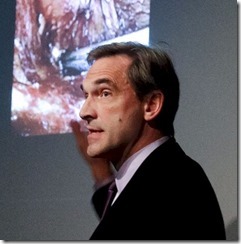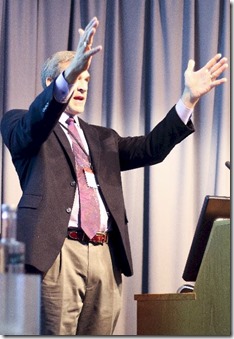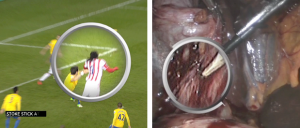“Software is infiltrating everything we do these days. Software is going to be a major enabler in our society.” – Steve Jobs
Last week, Forclarity founder Bruce Lynn spoke at the Enteric HTC Hackaday 2016 “Imaging, Sensing and Digital in GI Medicine” held at the Royal Society of Medicine. He overviewed a range of image processing technologies that offer both the exacting performance levels required by and a broad utility applicable to minimally invasive surgery (MIS). While software technology has revolutionized most aspects of our lives, it remains relatively absent from the operating theatre. Surgeries remain largely a device dominated arena. But the rise of MIS has introduced the world of digitization to this environment. Software to manipulate and enhance those digital images is the next logical step.
Lynn overviewed the industries pioneering this technology like film, television, sport and consumer video. A big driver is the power advances in graphics processing driven by new generations of GPUs (Graphical Processing Units). A range of academic and industry development has produced sophisticated tools for tracking, keying, object identification and filtering. He also introduced a range of applications that have strong utility in the MIS environment like structure identification, work area enhancement, and virtual smoke removal.
The second annual event covered an extensive array of technologies including many technologies which dovetailed with the Forclarity presentation and work. The exploitation of imaging technology continues to grow. The most obvious application is diagnostics which for years has been grounded in images from MRIs, x-rays, CT scans, etc. Software is especially starting to drive more innovation in diagnostics with computational algorithms “interpreting” the image information.
- Director Aston Brain Centre Paul L. Furlong described enhancements in measuring Oesophageal pain responses, gastrointestinal transit time and colonic motility.
- CEO of Motilent Alex Menys briefed the group on its algorithmic analysis of gut motility for the diagnosis of Crohn’s Disease and other GI ailments.
- Research Registrar Kapil Sahnan was combining imagery with advanced CAD software to create 3D models of fistulas to provide not jut a virtual, but a “real” model for both diagnostic, guidance and even patient care (as a tangible and visual aid to explain issues to the patient)
- Dr. Daniel Sifrim MD on intraluminal diagnostics in the oesophagus.
Other non-imaging technologies covered included:
- Florence Nightingale Foundation Professor of Nursing Christine Norton on faecal detection devices.
- CUHK and Prince of Wales Hospital Professor Hans Gregersen on biomechanics and bionic device technologies.
- Docobo Managing Director Adrian Flowerday on remote monitoring.
- Professor Paul Swain (inventor of Capsule Endoscopy) on the history of technology in medicine.
For more details on Enteric HTC and the Hackaday event, check out the Enteric website.
“Companies in every industry need to assume that a software revolution is coming.” – Marc Andreessen


